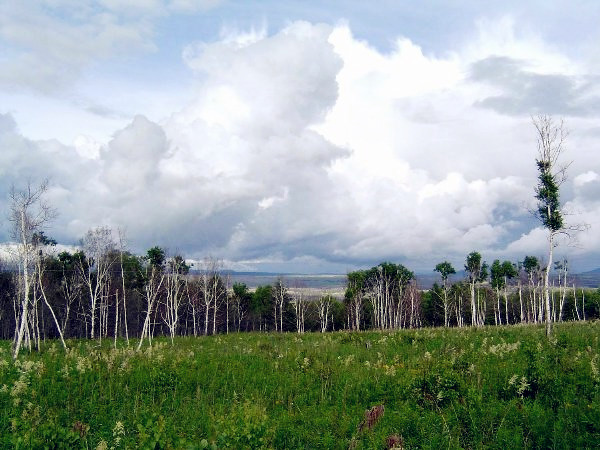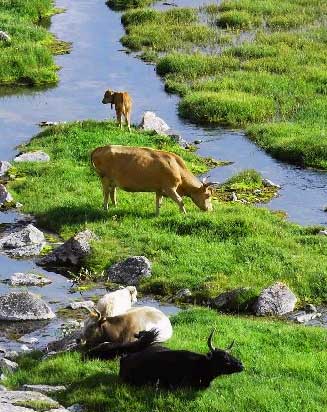Xilin Gol Prairie
 |
Xilin Gol Prairie is located in the middle of the Inner Mongolian autonomous region, bordering on the Republic of Mongolia in the north and neighboring Hebei province in the south. |

For decades, it's been a rich resource of grass and water for cattle, and one of the Mongol ethnic group's main regions to live close together.
Xilin Gol Prairie is located in the middle of the Inner Mongolian autonomous region, bordering on the Republic of Mongolia in the north and neighboring Hebei province in the south. Within the zone are vast stretches of natural grasslands and landscapes of sand, lakes and volcanic remains, the most typical prairie scenery in Inner Mongolia.
For decades, it's been a rich resource of grass and water for cattle, and one of the Mongol ethnic group's main regions to live close together. The prairie boasts a great number of historical sites, such as the Xilinhot Scenic Zone, the Great Wall of the Jin Dynasty (1115-1234), and the Site of Shangdu (Upper Capital) of the Yuan Dynasty (1271-1368), etc.
The prairie has plenty of water and lush grass. The wild fauna and flora are abundant. Its natural landscape and manmade features are unique. Atractions include: Zagyastail Lake, sandy land, a mixed forest of poplar and birch, sandy-land spruce forest, Habqil natural canyon, and lava tableland. The Xilin Gol Prairie was designated by UNESCO as an integrated part of the world's Biosphere Reserve (typical grassland ecological system), a project of the world Biosphere Reserve Network.
Bayan Xile Eco-tourism Area is located 55 km southeast of Xilinhot city, and covers a total area of 3,730 sq km. Bayan Xile means "fertile mountain ridge" in Mongol.
The Site of Shangdu (Upper Capital) of the Yuan Dynasty is located some 20 km northeast of Dundhot where the government of Zhenglan Banner, Xilin Gol League, is located. Shangdu was designed by Liu Bingzhong, Kublai Khan's Han adviser. It was completed in 1256 after four years' construction. The design of the capital embodied the layout of a traditional Han city and at the same time took into consideration the habit of Mongolians' nomadic life style. In 1260, Kublai Khan succeeded to the throne here calling it Kaipingfu. In 1271, he named his reigning dynasty the "Yuan" and established the capital in present-day Beijing. The Kaipingfu was therefore renamed Shangdu because it is north of Beijing, and had since become the summer resort of Kublai Khan. The site of Shangdu is now under state protection.



 Print
Print Mail
Mail





